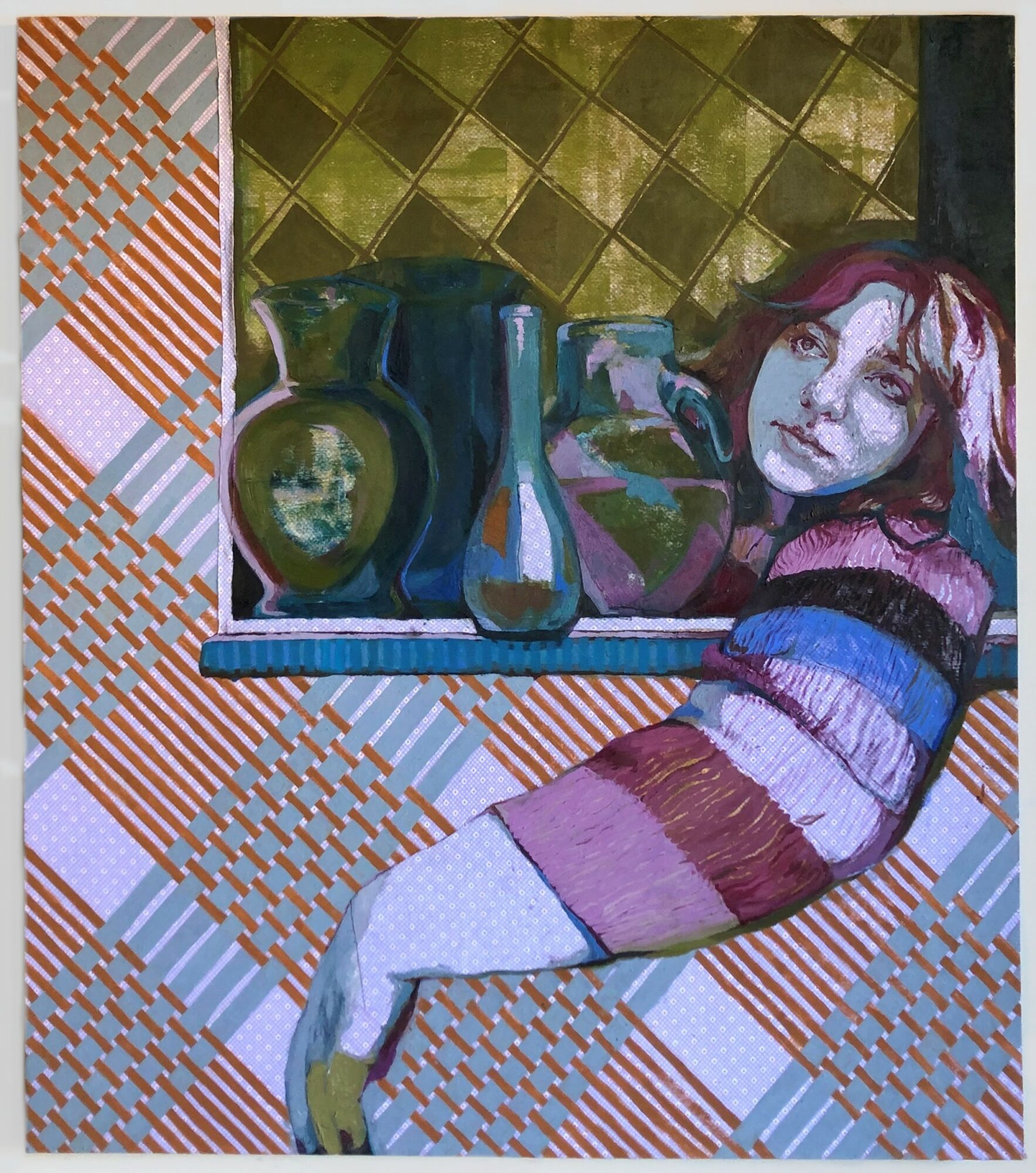

Today we’d like to introduce you to Holly Kuhl.
Hi Holly, please kick things off for us with an introduction to yourself and your story.
I’m a textile fine artist, born in Dallas Texas, and living and working in Austin, Texas. My father, also an artist, encouraged creative thought and craft early on in my life and enabled my discipline in the studio, which I feel was the catalyst for me taking my work seriously and later pursuing art as a career. I moved to the city primarily for school, graduating from The University of Texas at Austin with a BFA in Studio Art in 2020, actually during peak-Covid. And since virtually fulfilling that chapter of my life, recent paintings and printed works of mine have been included in group exhibitions SOFT (2021) in Bee cave, From Afar (2020), at the Visual Arts Center in Austin, receiving Juror’s Distinction, and as part of a private collection in WEST.
Material pleasures have enriched and informed my relationship with art, as I’ve always incorporated a portrait or a collection of bodies into my drawings now the very procedure I use to make something is heavily reliant on responding to a found object first, to a fabric, to sensations, or a feeling. Archiving discarded fabrics beside precious ones, or repurposing both decorative and functional objects from the home, has allowed me to engage with the content of my work and truly question what is valuable to make. I play a lot with craft-making techniques and formal ones and often utilize close friends as figure models. Expressive color has been an active participant in my most recent drawings– which is something I am particularly excited about!
Would you say it’s been a smooth road, and if not what are some of the biggest challenges you’ve faced along the way?
Aside from the collective impact of the pandemic, and the inevitable stresses of maintaining a productive environment or not being able to see art in-person, as I’m sure many of us were experiencing, 2021 actually brought a little extra chaos and loneliness to my work-life, when I displaced my wrist and was unable to make anything at all for around three months. I don’t think I will ever take for granted how important my hands are in daily life and art-making activities, but I also have an entirely new relationship with how I care for my body, with healing and with resistance. Layering is a major optical tool in my paintings, so I’ve been sketching lots of images of x-rays and daydreaming about holding hands in public spaces [covid free, of course].
Appreciate you sharing that. What else should we know about what you do?
As a way of seeking what constitutes the divide between decoration and function, my paintings layer fictitious patterns over the “-real-” or premade. Found material provides a visual noise in constant optical confrontation to the shapes and bodies placed overtop. Subjects often in recumbent pose, afford brief stability and comfort as tensions build across what is worn, what is constructed as space, and where colors operate in relation to the domestic trends of functional textiles or as formal devices in traditional art-making. My aim is to find pleasure in material, in physical possibilities and in limitations.
I think a lot about the relationship of craft and [versus] fine art. How does pressed silk communicate sex and labor when sat beside a roughed denim? Is recycled tablecloth of polyester and plasticky linen grand enough to carry my treasured pigments and oil paint? Where do associations of gender and value breed themselves into a pattern’s history?
To honor the material is to utilize it, and I do so maternally; if a portrait or art object is inherently precious, then my work seeks to include and thus elevate a scrap of fabric. I search for designs that will relate to the subject, but that is not to say I attempt complete seamlessness or balance. Refined areas neighbor those that break from the rule. Colors do not always “-match-” and patterns do not always repeat. I like playing tricks with structure, believability, and familiarity in ways that require the viewer to question what is present and what is important. The work satisfies a need to make, find, and concentrate.
We all have a different way of looking at and defining success. How do you define success?
In the professional art world, I guess the ‘correct’ answer would point somehow to gallery representation or being honored by lots of patient viewers who look and research and write about your work. Honestly, all of that sounds fantastic and even validating, but lately my most concrete understanding of success is more tied to the making itself. Setting a goal, finishing a task, standing about 6 feet back and analyzing a painting I’ve set aside all day to struggle with and possibly complete. That’s success for sure.
Contact Info:
- Email: holly.kuhl@g.austincc.edu
- Website: www.hollykuhlart.com
- Instagram: hollykuhlm











Image Credits
Holly Kuhl













